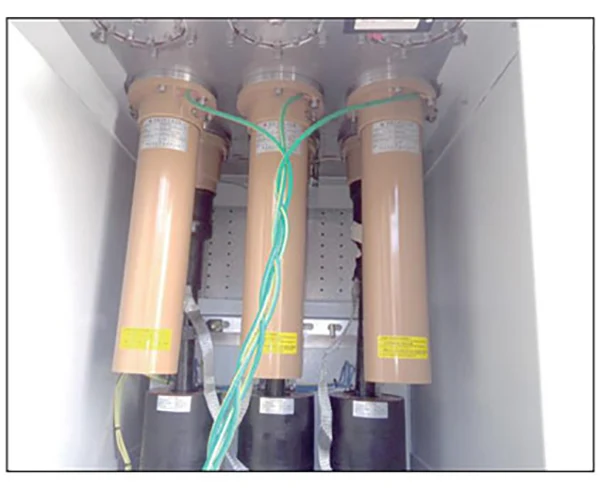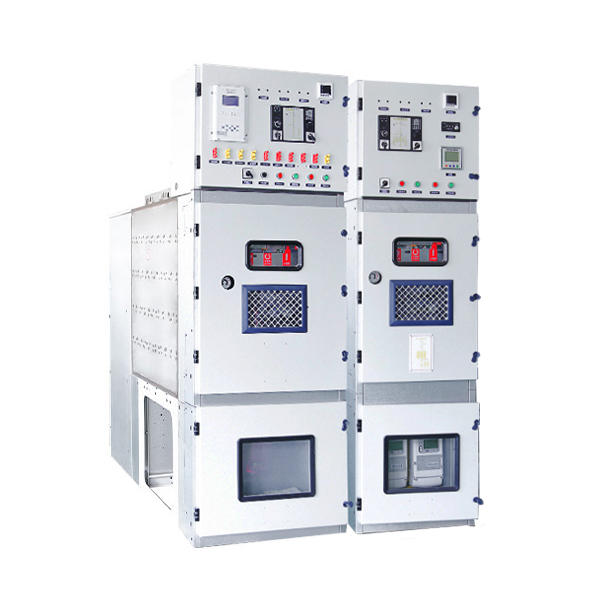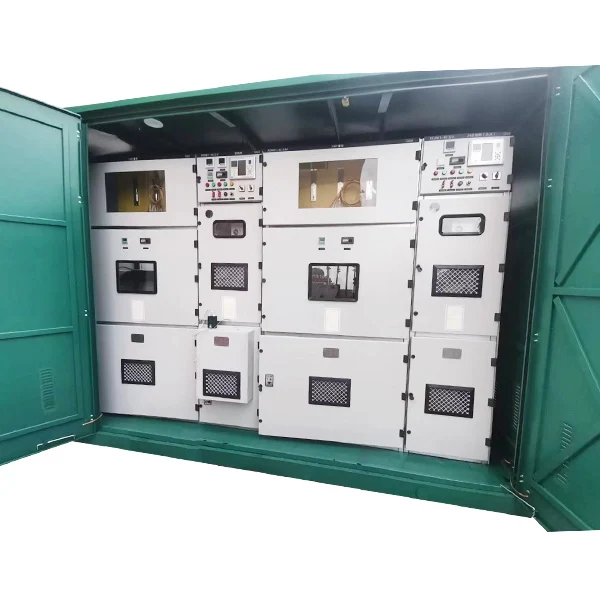35kv 1250A Power Distribution Switchgear Gas Inslutated Switchgear
In recent years, with the progress of society, economy, and technology, engineering construction has become increasingly intricate. There is a rising demand for compact switch equipment that is low-maintenance and smart. Domestic and international switch manufacturers are currently focusing on the development of the 35kv 1250A Power Distribution Switchgear Gas Inslutated Switchgear, also called gas-insulated switchgear (C-GIS). This type of switchgear encases high-voltage elements like busbars, circuit breakers, isolating switches, and power cables in a shell with reduced gas pressure.
Model:35kv 1250A medium voltage electrical switchgear
Send Inquiry
Product Features
1. By using sulfur hexafluoride gas as an insulating and arc extinguishing medium, the size of the switchgear can be greatly decreased, leading to a more compact and smaller sized design.
2. The conductive part of the main circuit, which is highly trustworthy and risk-free, is secured in SF6 gas, keeping the high-voltage real-time conductor enclosed and untouched by exterior factors. This makes certain lasting secure procedure and high reliability of the tools.
3. There is no risk of electrical shock or fire.
4. The 35kv 1250A Power Distribution Switchgear Gas Inslutated Switchgear is developed with an independent modular structure, with the air box made from high-precision aluminum plate and can be disassembled. The isolation switch embraces a straight transmission with 3 positions. To lessen control relay and circuit confusion, an additional control component with nearly 100 PLC points is included for grounding, isolation button, and remote procedures. The system button is modular, attaching opening and closing points with plum blossom calls. This removes the possibility of non-operation in the initial rotary isolation switch and grounding switch, settles the concern of unpredictable and extreme get in touch with resistance in the initial rotating seclusion switch, and includes shielding and voltage equalization covers on each call's outside to attend to partial discharge troubles throughout switch breakpoints manufacturing.
5. The gas-insulated switchgear is convenient to use and organize. It can be utilized as an independent unit and satisfy different main wiring needs via mix. Supplying it to the website as units can shorten on-site installment and enhance reliability.
Execution standards
IEC 62271-200: 2011 High-voltage switchgear and controlgear - Part 200: AC metal-enclosed switchgear and controlgear for rated voltages above 1 kV and up to and including 52 kV
IEC 62271-102:2013 6.2 High-voltage switchgear and controlgear - Part 102: Alternating current disconnectors and earthing switches
IEC 62271-100: 2017.6.2 High-voltage switchgear and controlgear - Part 100: Alternating-current circuit-breakers
GB/T11022-1999 Common technical requirements for high-voltage switchgear and control equipment standards
GB3906-2006 3.6kV~40.5kV AC Metal Enclosed Switchgear and Control Equipment
GB311.1-1997 Insulation Coordination of High Voltage Transmission and Transformation Equipment
GB/T16927.1-1997 High voltage testing technology Part: General test requirements
GB/T16927.2-1997 High voltage testing techniques Part 2: Measurement systems
GB/T7354-2003 Partial discharge measurement
GB1984-1989 AC High Voltage Circuit Breakers
GB3309-1989 Mechanical tests of high-voltage switchgear at room temperature
GB4208-2008 Code for Degree of Protection Provided by Enclosures (IP)
GB12022-2006 Industrial sulfur hexafluoride
GB8905-1988 Guidelines for gas management and inspection in sulfur hexafluoride electrical equipment
GB11023-1989 Test method for sulfur hexafluoride gas sealing of high-voltage switchgear
GB/T13384-1992 General technical requirements for packaging of electromechanical products
GB4207-2003 Solid insulation materials - Determination of relative and resistance to electrical trace index under humid conditions
GB/T14598.3-2006 Electrical relays - Part 5: Insulation of electrical relays
GB/T17626.2-1998 Electromagnetic Compatibility Testing and Measurement Techniques - Electrostatic Discharge Reactance Interference Test
GB/T17626.4-2008 Electromagnetic Compatibility Testing and Measurement Techniques - Electrical Fast Transient Pulse Group Immunity Test
GB/T17626.5-2008 Electromagnetic Compatibility Testing and Measurement Techniques - Surge (Impulse) Immunity Test
GB/T17626.12-1998 Electromagnetic Compatibility Testing and Measurement Techniques - Oscillating Wave Immunity Test
Test Type
◆ Insulation test
◆ Temperature rise test
◆ Loop resistance measurement
◆ Short-time withstand current and peak withstand current tests.
◆ Verification of making and breaking capabilities
◆ Mechanical operation and mechanical characteristic testing tests
◆ Protection level detection
◆ Additional tests on auxiliary and control circuits
◆ Pressure tolerance test for inflatable compartments
◆ Sealing test
◆ Internal arc test
◆ Electromagnetic compatibility test
Basic Scheme
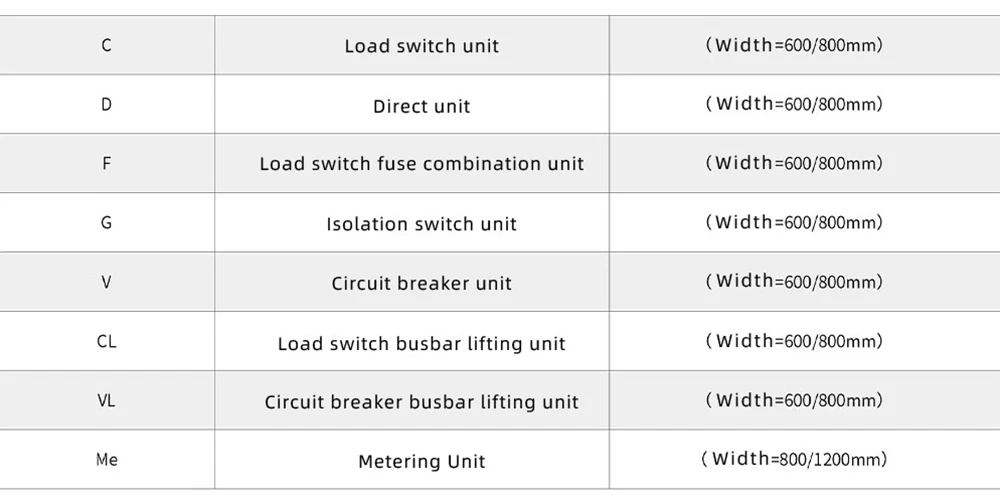

Operation Condition

Technical Parameter
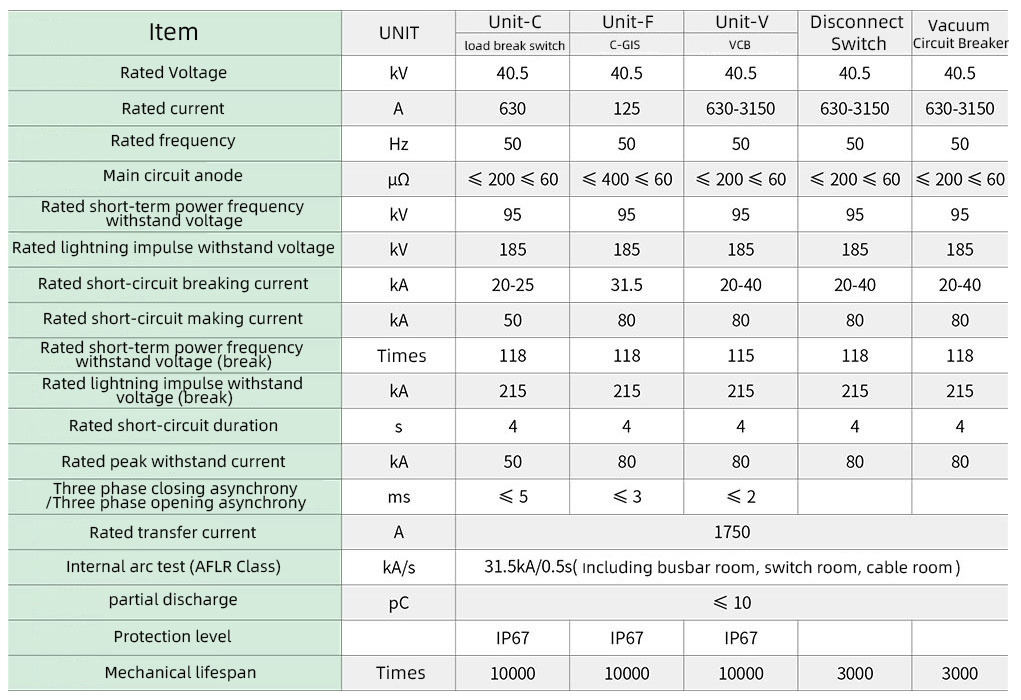
Grounding and Separation
The 35kv 1250A Power Distribution Switchgear Gas Inslutated Switchgear is available in multiple current ratings, including 630A, 1250A, 1600A, 2000A, 2500A, 3150A, among others. The cabinet size can be tailored to specific needs. Its outer casing is constructed from an aluminum zinc-coated sheet, with the gas box assembled from 304-grade stainless steel plates. Each unit can be expanded and integrated separately according to the design layout. The cabinet is compartmentalized into various sections: secondary control, busbar, circuit breaker, operating mechanism, and cable rooms. The cable connection height allows for easy maintenance and installation at a height of 700mm. Additionally, the cabinet is furnished with a comprehensive grounding protection system. Functional compartments within the switchgear, such as switch rooms, busbar rooms, cable rooms, and secondary circuit channels, are isolated by grounding metal partitions and operate independently.
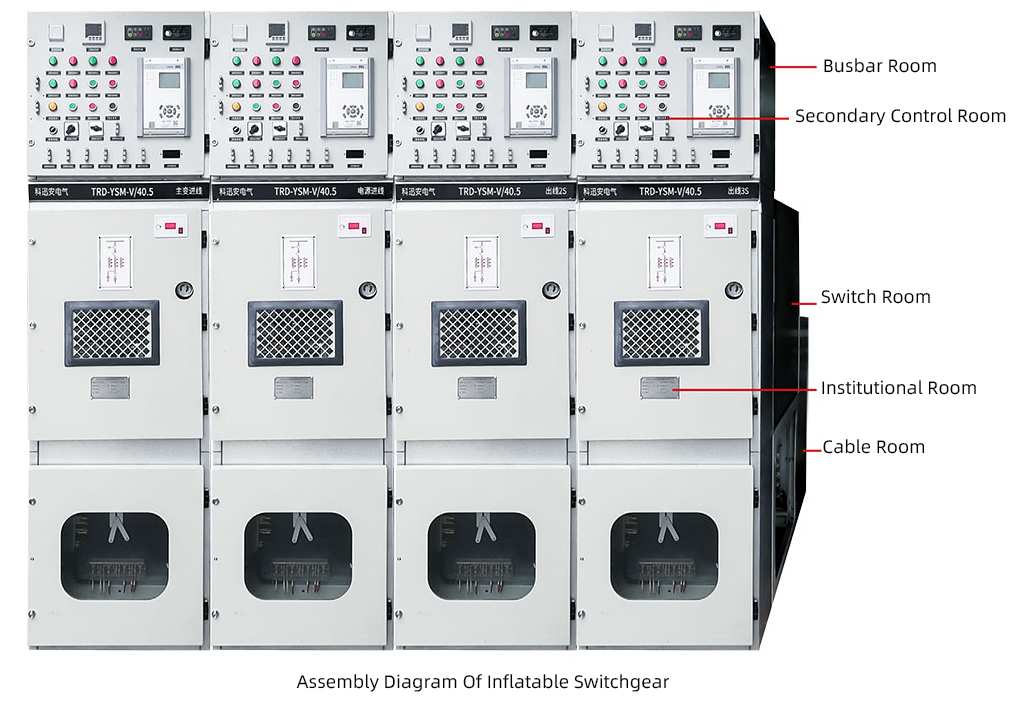
Secondary control room
The cabinet is situated beneath the secondary control room and features boards for installing components and brackets for securing terminal blocks. The secondary control room is equipped with various devices, including wiring terminals, small busbar terminals, and comprehensive protection devices, which enable the system to perform remote control, telemetry, remote signaling, and local monitoring functions. The cabinet can be easily connected to small busbars via circular holes on the left and right side panels and terminals.
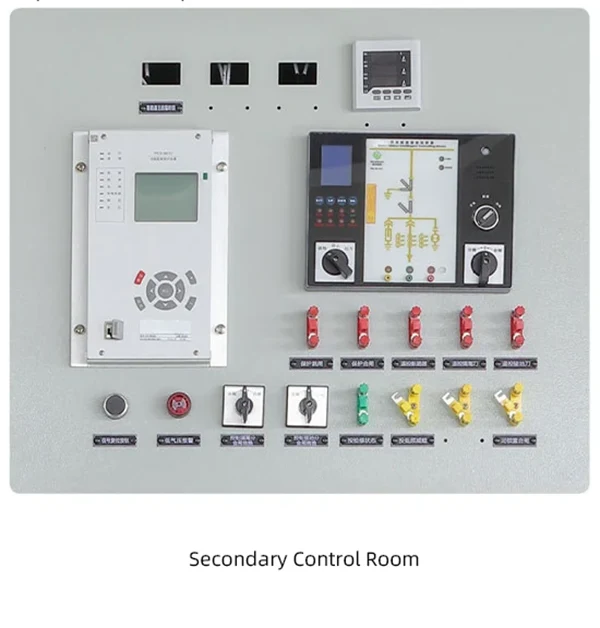
Busbar Compartment
The topmost compartment houses both the busbar chamber and the isolation system. The circuit cabinets and busbars positioned on either side are connected via cabinet merging, which occurs once the cabinet is placed on the ground support.

Switch Room
The 35kv 1250A Power Distribution Switchgear Gas Inslutated Switchgear features a plate-like design comprising two chambers stacked on top of each other at the cabinet's center. The upper chamber houses a three-position isolation switch, while the lower chamber contains a vacuum circuit breaker. The busbar, isolation switch, and circuit breaker are set up vertically. A single-chamber design is straightforward, cost-effective, and simple to produce, but it has lower reliability due to the components being closely situated. In contrast, a multi-chamber design offers enhanced safety by preventing component interference and facilitating easy replacement. However, it is a more intricate, costly, and challenging option to manufacture.

Institutional Room
The spring-driven system is located on a level surface, with the isolation and circuit breaker components positioned separately. It is connected to the insulation rod of the vacuum arc extinguishing chamber both before and after, streamlining the transfer process. The system's performance traits are more closely matched with the circuit breaker's operation, leading to lower energy consumption and improved mechanical dependability and adaptability.
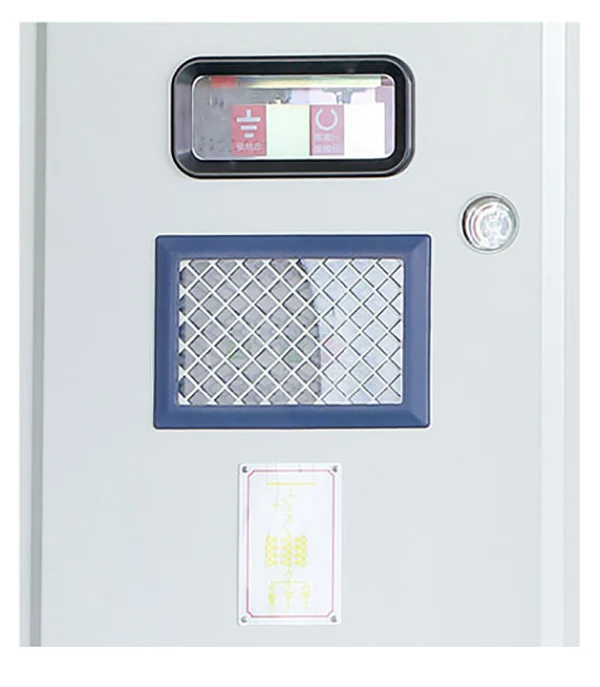
Cable Room
The cabinet is situated above the cable room, boasting a distinct pressure relief pathway.The space between the ground and the cable connection terminals can reach a maximum height of 700mm. In accordance with regulations, grounding interlocks are integrated into the cable room, enabling the installation of two cables and lightning arresters in each circuit. Additionally, the internal cone insertion method securely fastens the incoming and outgoing cables and lightning arresters.
